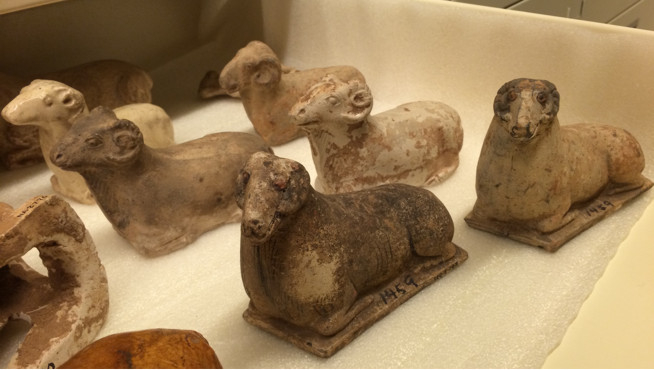Beginning on February 19th 2015 and ending on February 7th 2016 is the Year of the Sheep, or Goat, or Ram in the Chinese calendar. No other year of the Chinese lunar calendar seems to create quite so much confusion as the Year of the Sheep/Goat/Ram. The confusion probably stems from the Chinese term for all of these characters: "Yang". Hence in Chinese, Year of the Yang works perfectly, there is no confusion, and you can use any member of the caprinae subfamily (which includes sheep and goats) to figurally represent the year. However, in English we are left with this confusion. As a number of people know of my interest in human belief systems around the world, which includes everything from the origins of monotheism to astrology, I am often asked: which is it?
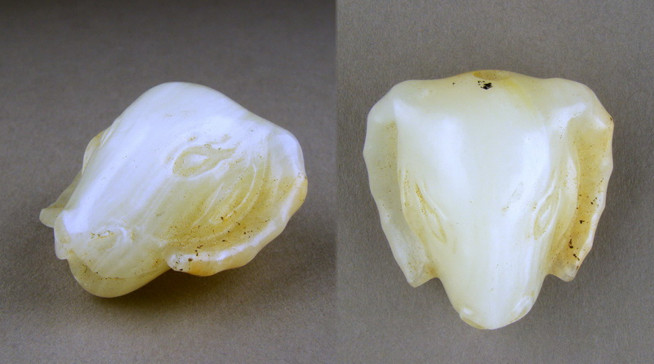
Figural head of a ram - Carved calcite; China - Eastern Zhou-Han dynasty - 771 BC-221 AD; ROM #960.241.112 - The Dr. James M. Menzies Collection - Length 2.5 Width 2.8
The Chinese lunar calendar based on a cycle of 12 "Branches," each associated with an animal, reaches deep into Chinese history. It became codified in the Zhou dynasty (1046-256 BC) and essentially became what we recognise in the Han dynasty (206 BC-220AD). Each year (months, days, and hours also reflect this cycle) is considered to have a characteristic which is imparted to anyone born at that time, these characteristics are those associated with each of the animals.
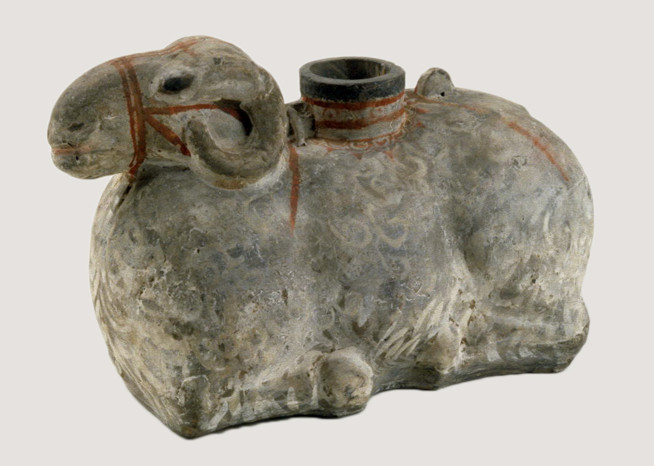
Stand in sheep form - Moulded earthenware with hand-made components; Reportedly from Luoyang Mangshan, Henan province, China - Eastern Han dynasty - 25 - 220 AD; ROM #923.17.258 - The George Crofts Collection - Length 30.2cm Height 19cm Width 15.6cm
One source that might be relevant can be found in the ROM's collections, as the 12 animals of the calendar: rat, ox, tiger, rabbit, dragon, snake, horse, goat, monkey, rooster, dog and pig, are often found depicted in art, or in the figurines made to go into tombs. The ROM's Collection Database records 48 objects in the collection from China depicting sheep, mostly domestic sheep, but some later examples of the argali, or wild sheep found in the highlands of Western China. They range from the Zhou and Han dynasties, through a large number of the Tang dynasty (618–907 AD), up until the 20th century. There seem to be no goats. Both domestic sheep and domestic goats are actually introduced species, originally from West Asia, with goats becoming popular in recent times with many house-holds in the country owning a goat, possibly replacing the pig which was the symbol of "home" in ancient China. Sheep, on the other hand have dwindled in population in recent years, despite being more important in ancient times. Hence in contemporary Chinese perception the goat is the more common Yang, although when the calendar was being developed, the sheep was better known.
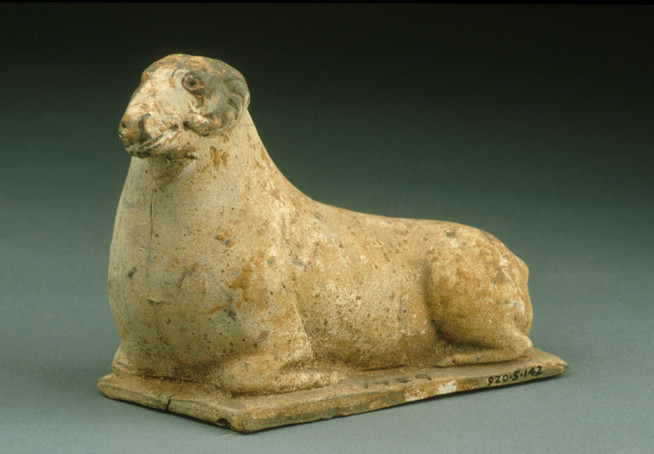
Burial figure of a sheep - Moulded earthenware; Reportedly from Luoyang Mangshan, Henan province, China - Northern Dynasties Period (Northern Wei) - early 6th century AD; ROM #920.5.142 - The George Crofts Collection - Length 12.8cm Height 9.1cm Width 5.5cm
Another line of evidence is in the nature of the animals, and those said to be born in the year. Those born in the Year of the Yang are said to be timid, gentle, dependent, emotional, pessimistic, sensitive, shy, easily led, and only have money if someone gives it to them. In Western Asia, where both species originate, the symbolism of sheep and goats in the Abrahamic faiths (Judaism, Christianity and Islam) is clear with the meek sheep divided from the lewd goats.
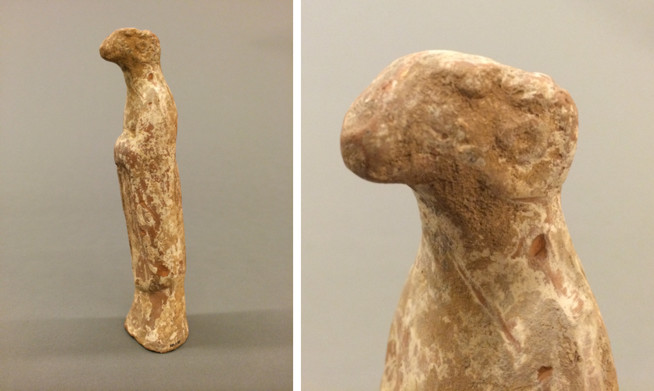
Burial figure of a calendrical sheep - Moulded earthenware; China - Tang Dynasty - mid 8th century AD; ROM #921.1.32 - The George Crofts Collection - Height 20.1cm Width 5.7cm Depth 6.1cm
So like the depictions in the ROM's collection, the nature of the animals would seem to indicate that when the Chinese calendar was being developed they were thinking of sheep. But what of the ram? A ram is a male sheep, and most of these depictions are indeed of horned animals. But this has probably occurred due to confusion with the Western Zodiac sign of Aries, the Ram. Conceivably this confusion is encouraged by those born in the Year of the Sheep, who would rather be associated with the Aries qualities of independence, optimism, and courage which are the exact opposite of those traits attributed to those born in the Year of the Sheep. In a world where timidity and followership and not considered positive traits, this is perhaps understandable, and indeed in China this is the least popular year to have a child.
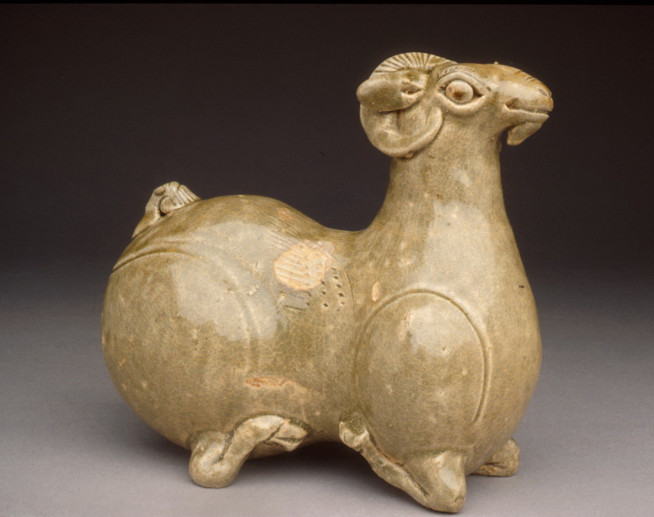
'Proto-Yue' ware candlestick in ram form - Wheel-thrown stoneware with hand-made components and glaze; China - Eastern Jin Dynasty - early - mid 4th century AD; ROM #992.131.1 - Dr. Herman Herzog Levy Bequest Fund - Length 14.5cm Height 14cm Width 8.6cm
Whatever you believe, may you have a peaceful Year of the Yang!
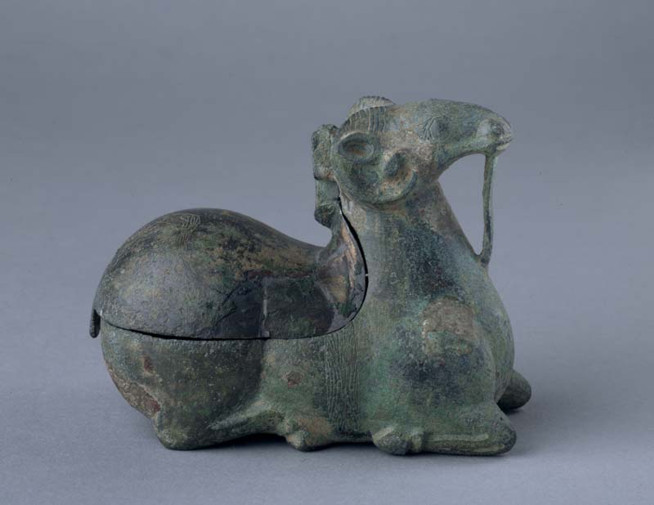
Bronze lamp in the form of a ram - Cast bronze; China - Western Han dynasty - 206 BC - 24 AD; ROM #931.13.110 - Bishop William C. White Collection - Length 12.7cm Height 9.8cm Depth 6.6cm
